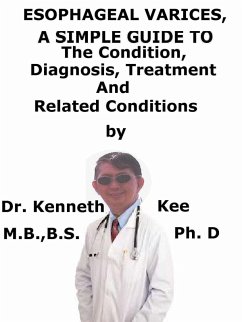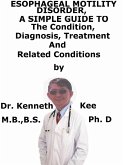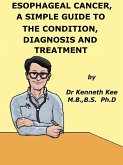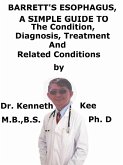Esophageal varices are excessively swollen sub-mucosal veins present in the lower third of the esophagus.
They are most often an effect of portal hypertension, often due to cirrhosis
Patients with esophageal varices have a strong tendency to bleed readily.
Variceal hemorrhage happens from dilated veins (varices) at the junction between the portal and systemic venous systems.
Varices are likely to occur in the distal esophagus and the proximal stomach but isolated varices may be present in the distal stomach, large and small intestine.
Bleeding is typically severe and may be threatening to life.
Bleeding from esophageal varices is responsible for 5-11% of all cases of upper gastrointestinal bleeding (UGIB).
In Western countries, alcoholic and viral cirrhosis are the primary causes of esophageal varices and portal hypertension.
30% of patients with compensated cirrhosis and 60-70% of patients with decompensated cirrhosis have gastro-esophageal varices at the time of presentation.
Esophageal varices are diagnosed mainly with endoscopy
Causes
The causes of esophageal varices are anything that can produce portal hypertension.
Pre-hepatic
a. Portal vein thrombosis.
b. Portal vein obstruction - congenital atresia or stenosis.
c. Increased portal blood flow - fistula.
d. Increased splenic flow
Other Pre-hepatic causes are:
1. Splenic vein thrombosis and
2. Portal vein thrombosis.
These disorders often are linked with:
1. Hyper-coagulable states and
2. Malignancy (e.g., pancreatic cancer).
Intra-hepatic
a. Cirrhosis due to different causes such as alcoholic, chronic hepatitis (e.g. viral or autoimmune).
b. Idiopathic portal hypertension (hepatoportal sclerosis).
c. Acute hepatitis (particularly alcoholic).
d. Schistosomiasis.
e. Congenital hepatic fibrosis.
f. Myelosclerosis
Post-hepatic
a. Compression (e.g. from tumor).
b. Budd-Chiari syndrome.
c. Constrictive pericarditis (and rarely right-sided heart failure).
Symptoms
a. Hematemesis (most often),
b. Melena.
c. Abdominal pain
d. Features of liver disease and specific underlying condition.
e. Dysphagia or odynophagia (pain on swallowing; uncommon)
f. Confusion secondary to encephalopathy (even coma).
Diagnosis
a. Endoscopy is needed at an early stage.
b. FBC - hemoglobin may be low; MCV may be high, normal or low; platelets may also be low; WBC may be raised.
c. Clotting factors including INR
d. Renal function
e. LFT
Chest X-Ray - patients may have aspiration or chest infection.
Treatment
In emergency situations, the treatment is directed at:
a. Stopping blood loss,
b. Maintaining plasma volume,
c. Correcting disorders in coagulation induced by cirrhosis,
d. Proper use of antibiotics (normally a quinolone or ceftriaxone, as infection by gram-negative strains is either concomitant or a precipitant).
The purpose of treatment should be hemodynamic stability and hemoglobin of over 8 g/dL.
Two main treatment methods are present:
a. Variceal ligation or banding
b. Sclerotherapy
Acute Variceal Bleeding Medical Treatment
1. Upper Endoscopy urgently (within 12 hours)
2. Vasoactive agents
a. Octreotide or Sandostatin (preferred)
b. Long-acting somatostatin analog
This is the preferred vasoactive agent in Upper GI Bleed
c. Intravenous Vasopressin
This is used with Nitroglycerin
d. Non-selective Beta Blocker
Propanolol, Nadalol, Timolol
Acute Variceal Bleeding Invasive Treatment
1. Endoscopic ligation or banding
2. Transjugular intrahepatic Portosystemic Shunt (TIPS)
Liver transplant is the treatment of choice for patients with advanced liver disease
TABLE OF CONTENT
Introduction
Chapter 1 Esophageal Va...
Dieser Download kann aus rechtlichen Gründen nur mit Rechnungsadresse in A, B, CY, CZ, D, DK, EW, E, FIN, F, GR, H, IRL, I, LT, L, LR, M, NL, PL, P, R, S, SLO, SK ausgeliefert werden.









